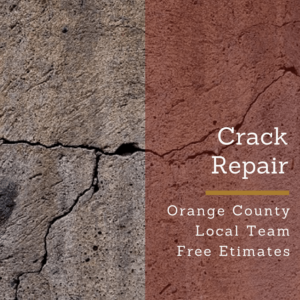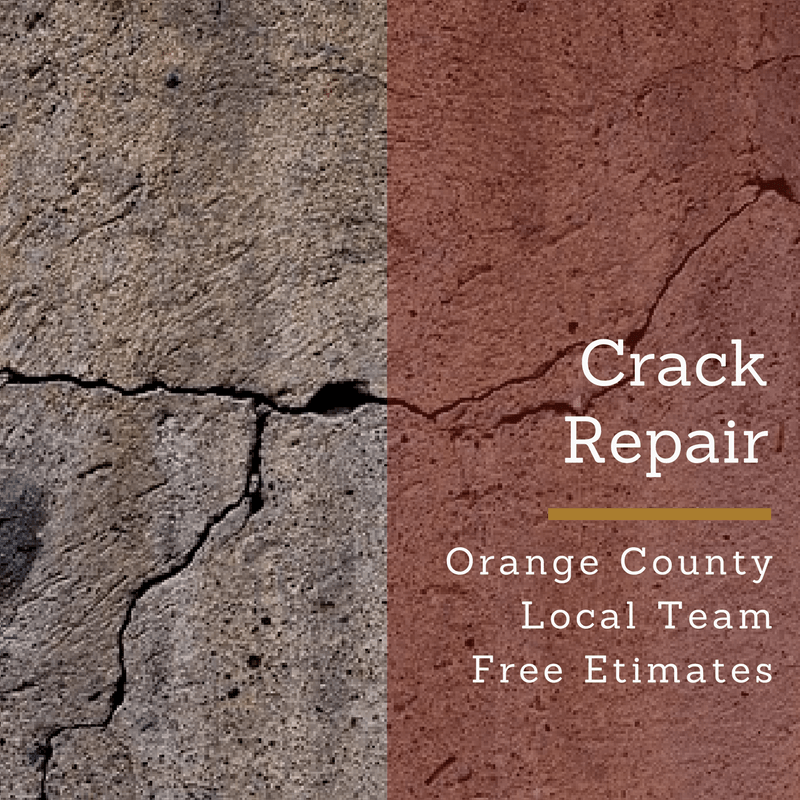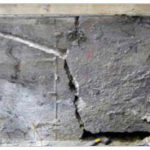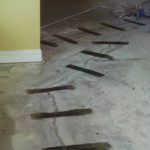
Cracks can be ugly, yet harmless, but they can also be small and a sign of a major problem. Homes and businesses in Orange County can have cracks, regardless of whether it’s an older structure or new construction. There are a lot of variables that can cause cracks throughout your building.
You should take notice of any new or growing cracks you may find. FOUNDATIONS ON THE LEVEL has the skills and tools to take care of any cracks in your home or office.
Causes of Foundation Cracks
Most foundation cracks are the result of structural issues like severe settlement and shifting. Soil can be impacted by moisture levels. Too much water and the soil can heave and swell, too little water and the soil can shrink. This can put tremendous pressure on your foundation walls and slabs. If the moisture levels change drastically, the effect can be like bending a piece of metal back and forth. Eventually, it will crack and break.
Repair Solutions in Orange County
Foundation Crack Repair
Our primary solution for foundation cracks is to install ECP (Earth Contact Products) steel piers to lift and stabilize foundations. These piers are installed under foundations, driven into the ground until they reach stable soils that can withstand the weight of the structure. They can then be utilized to raise and support the foundation for crack repair to prevent further issues from arising.
Slab Crack Repair
If the crack is in a slab, we can help with that, too. If you see cracks in any concrete slabs–your patio, pool deck, porch, or driveway–on your Orange County property, we can fix these with our slab leveling service. For this repair option, we utilize Accella Polyurethane Systems to inject polyurethane foam under sinking, cracked slabs. This foam expands under the concrete to raise and stabilize the slab and to close cracks in the slab.
Cracks You Might See in Your Orange County Home
If you live in Orange County, there are several different kinds of cracks that you should watch out for in your home. The warm dry weather throughout the year in Southern California can dry out the soil under your foundation, causing voids to form underground. If these voids form under your foundation or slab, they will not give the concrete enough support, leading to uneven settlement and shifting. These issues can cause major structural failure and should not be ignored.
Cracks can occur both externally and internally and could be signs of much more serious issues. Examine your home for the following kinds of cracks and contact FOUNDATIONS ON THE LEVEL to find the best repair solution.
Foundation Cracks
If you see cracks in your foundation, it could mean that your foundation has started to settle or that it has become structurally unsound. Horizontal cracks visible on the exterior foundation are typically more serious than vertical or diagonal cracks, although you should have all large cracks, over 1/32″ in width, examined by a professional, especially if additional problems (uneven floors, sticking doors, leaks) accompany the cracks.
Slab Cracks
Aside from your foundation, you might see cracks in other concrete slabs, such as your driveway, patio, pool deck, porch, stair stoop, or garage floor. Larger cracks, usually accompanied by heaving or sinking slabs, might indicate slab sinking due to erosion or soil shrinkage. Contact an expert at FOUNDATIONS ON THE LEVEL to get these cracks fixed as soon as possible to reduce tripping hazards and keep your family safe.
Wall Cracks
Cracks in your interior walls might be a sign of foundation failure. If you only see hairline cracks or if they are in the same direction that the drywall was hung, they are probably not a major issue. However, horizontal cracks, wide cracks, vertical cracks or diagonal cracks that span from the wall to the floor or ceiling may indicate foundation settlement or shifting. You should have these cracks looked at by a professional as soon as possible.
Floor Cracks
If you’ve noticed cracks in your concrete floor, you might be dealing with foundation problems. Floor cracks that are wide and are allowing water to enter are usually signs of foundation settlement or shifting. Also, look for cracks in areas of the floor that appear to be heaving or sinking. This is a sign that the foundation is no longer structurally sound and needs to be looked at right away.
Ceiling Cracks
Examine the shape and size of your ceiling cracks to determine if you have a foundation problem. Small, spider web-shaped cracks 1/16th of an inch or smaller are probably just signs of normal home aging. However, vertical cracks that run from the ceiling to the walls and cracks accompanied by bowing or sagging ceilings might indicate foundation damage.
If you see any of these issues in your Orange County home, contact us right away for professional crack repair.





